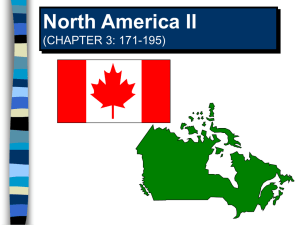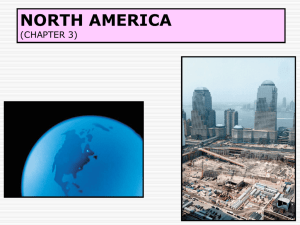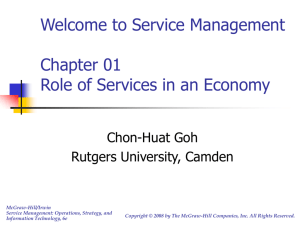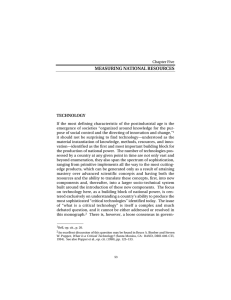North America - II
advertisement
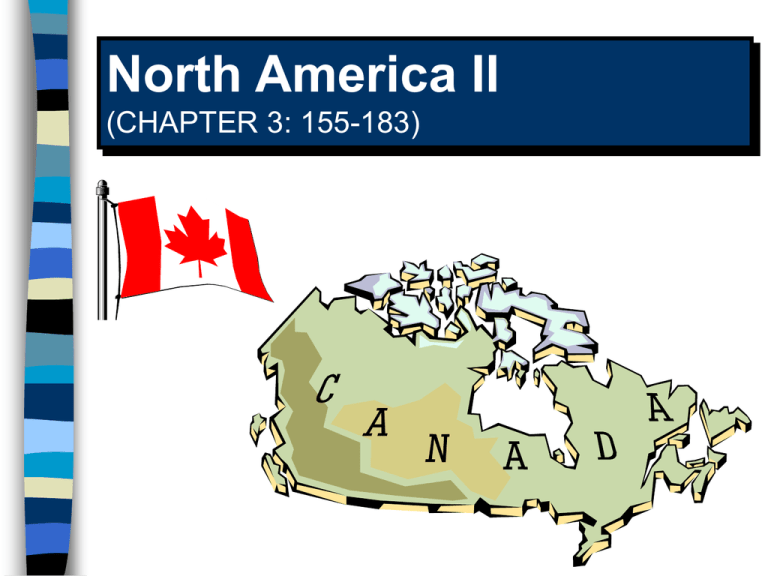
North America II (CHAPTER 3: 155-183) COMPONENTS OF THE SPATIAL ECONOMY ACTIVITIES OR SECTORS – Primary (Raw Materials) – Secondary (Manufacturing) – Tertiary (Services) – Quaternary (Information) – Quinary (Management) INDUSTRIAL LOCATION FACTORS Location of raw materials Labor availability Energy availability Location of market Transportation •Relative importance of factors change: •INDIVIDUAL SECTORS •NATURE OF THE ECONOMY FUEL RESOURCES NORTH AMERICAN MANUFACTURING BELT Agriculture in the US A Macro Von Thünen Model? POSTINDUSTRIAL LOCATION FACTORS 300 days of sunshine per year Recreational water within 1 hour drive Affordable housing Start up capital ($1 billion) Low risk environment – Tax breaks – Cooperative state & local governments – Lenders – Businesses POSTINDUSTRIAL OCCUPATIONS ATTRACTIONS FOR HIGH-TECH COMPANIES Major University (Graduate Engineering Program) Economic enterprises Government Social-services complexes Military C A N A D A Main Street Cluster Quebec City Toronto Montreal Detroit Windsor 4 Lesser Clusters URBAN SPATIAL CHANGES Macroscale (Interurban) Maurice Yeates –Developed a model to explain Canada’s urban system –Views cities as points in a network that interact with one another and serve the hinterlands –Similar to Borchert’s model –Included 3 developmental eras URBAN SPATIAL CHANGES Macroscale (Interurban) Frontier-Staples Era (<1935) – Economic transition from mercantile economy to one oriented to staples (raw materials and agricultural goods for export) – Growth of the industrial heartland – Montreal and Toronto emerged as dominant cities. URBAN SPATIAL CHANGES Macroscale (Interurban) Era of Industrial Capitalism (1935-1975) – Increase in manufacturing and tertiary sectors of the economy – Increase in urbanization – Large investment by US corporations in Canadian branch-plant production (auto industry) – Alberta experiences growth due to oil and natural gas production. URBAN SPATIAL CHANGES Macroscale (Interurban) Era of Global Capitalism (since 1975) – Rise in foreign investment from western Pacific Rim and Europe – Canada’s movement into the Postindustrial Society – Country achieves 77% urbanization DIVIDED QUEBEC REGIONS OF THE REALM Maritime Northeast French Canada Core Continental Interior South Southwest Western Frontier Northern Frontier Pacific Hinge REGIONS OF THE REALM North America II (CHAPTER 3: 155-183)
